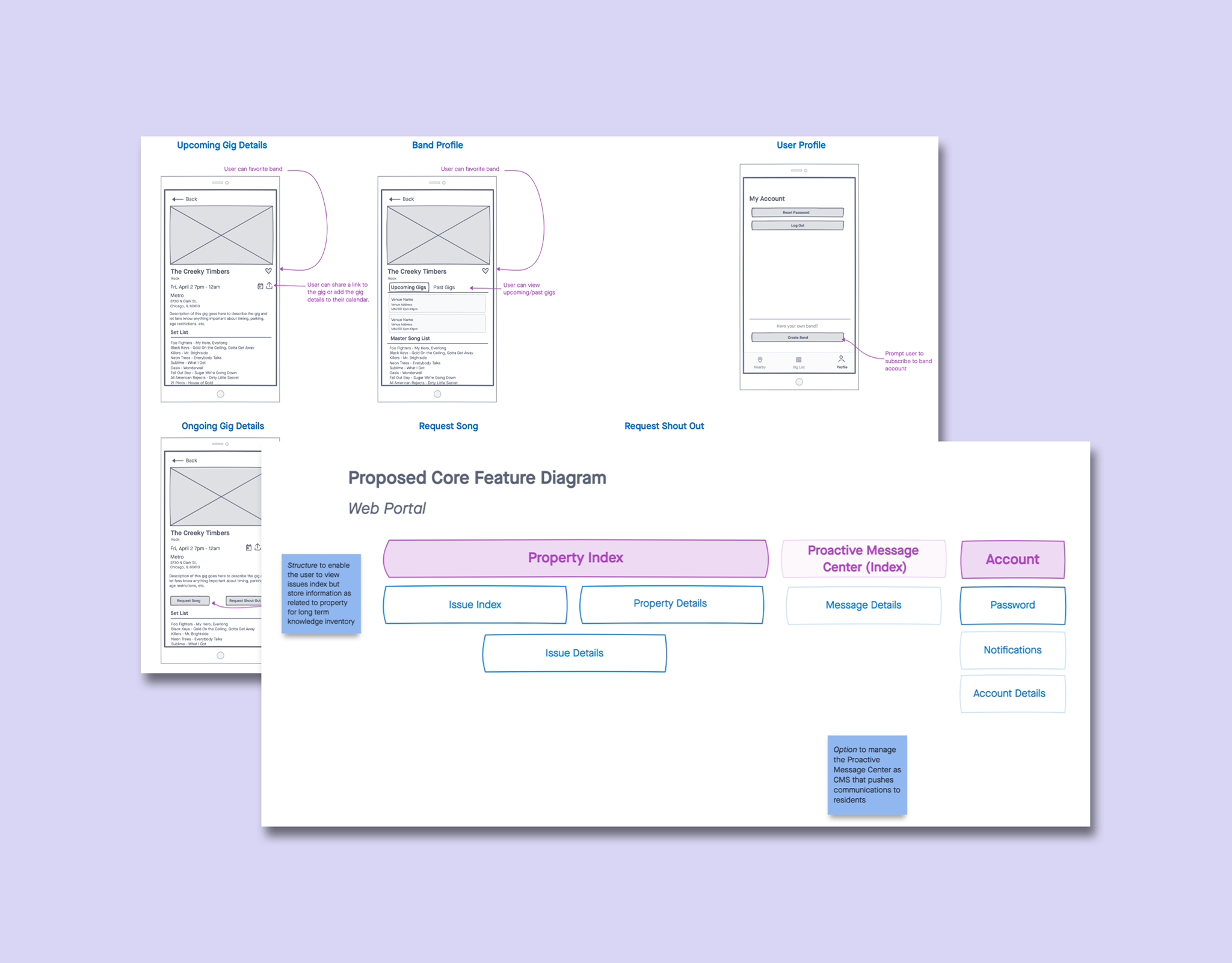Role: UX Designer
Challenge: Abode, a startup real estate client, needed a web based property search tool
Solution: I developed and delivered a multifaceted search tool to address multiple user groupsBackground
Abode’s goal is to provide assistance to homebuyers at every stage of the home buying process by leveraging data and AI powered by Watson. However, they did not have a way for clients to search for homes. Our solution utilized multifaceted search and data-driven recommendations to help users find homes and connect them with Abode brokers.
Initial Research
Redfin was a key competitor in the property search space but our research showed that their brokers were not perceived as high quality. Based on competitive research, we determined the basic patterns to follow and developed consistent content to include. Our challenge was to utilize research to establish a hierarchy to make our tool cleaner and more effective than competition.
Initial research yielded the following:
Neighborhood level data is good; block-by-block insights are better
Redfin is a great search tool, but brokers are perceived as low quality
Users want control over their own process
It’s a stressful process and users are looking for reliable tools
Two categories of users emerged:
We determined that we could leverage the AI to differentiate between exploratory and serious users based on their site interactions. Our goal was to curate more personalized experiences based on user type.
With those two user groups in mind, we established the problem we needed to solve:
How do we curate the search process to satisfy all stages of home buyers, with comprehensive local results that will encourage Abode account creation?
From a strategic perspective Abode is unique in the real estate market because Adobe will:
Address the explorers. Existing property search tools do not provide the flexibility to accommodate the unaddressed user group.
Become local experts. By combining a trustworthy search tool with property insights, Abode can provide detailed information about properties and neighborhoods.
Provide an end-to-end solution. Though there are many property search tools, there are no current services that provide resources for the entirety of the home buying process.
Ideation and creation
One principle we explored early on was progressive disclosure. We knew that our search filter would need to be robust for the more serious and seasoned users, but at the same time we didn’t want to overwhelm the exploratory users with too many options.
An expandable filter allows an exploratory users to filter by main filter options only, and also enables a serious user to utilize all available filtering options.
As we had two user groups to engage, we developed an exploratory search function in addition to the more conventional search process.
The traditional search mirrors existing platforms while the explore feature is a gamified version that utilizes large photos and enables users to swipe between properties.
Establishing a hierarchy
The organization of information was crucial to ensure improvement on existing tools, so we conducted card sorting to verify assumptions and existing patterns for the search filter and listing page.
We asked participants to place information in categories of Must Have, Nice to Have, and Don’t Need.
Though priorities varied slightly between individuals, clear areas of overlap emerged.
Overall, the Must Have category fluctuated the least, although school district information was highly dependent on whether the participant had or was planning to have children.
Testing
With participants who represented both exploratory and more serious users, we tested types of search, broker entry and account creation incentives.
We looked at when the users chose to use traditional searching or the explore feature, tested how the suggestion to use an Abode broker was received by participants and asked users if favoriting was enough of an incentive to create an account.
Prompting the user to connect with an Abode broker was a sticking point for users who had previous relationships with brokers. Our research supported the personal nature of the broker-client relationship, which we had to balance in relation to our client’s business needs. By timing the prompts correctly, users with brokers were not bothered by prompts, and users without brokers were open to suggested brokers.
We initially placed a broker prompt on the wishlist page, but users felt that their wishlist was personal and prefered to see the prompt on the favorites page instead.
The gamified elements of our design were particularly well received by explorers.
The wishlist enabled users to select possible attributes of a home, while the swipe enabled users to view large photos of the listing.
More serious searchers had fun with those options, but used the wishlist to curate more specific search results while using the traditional search.
Using criteria selected from their wishlist, this map now shows the user how close a listing may come to meeting all the user’s requirements.
Testing garnered the following feedback:
Exploratory searchers enjoyed the gamified explore feature
Broker prompts were most welcome on the favorites page
Users were happy to create an account to favorite properties
Users wanted to anchor their searches to a location, regardless of their stage in the process
Users enjoyed creating a wishlist of home qualities
Communication
In order to best communicate our ideas and progress with our client, we utilized an annotation format.
Presenting in this format was effective to deliver insights and rationale to the client and gain alignment on future direction.
Learnings
The challenge of this project was to resist the urge to reinvent the wheel. As much as we wanted to improve on property search tools, we had to balance that desire with current conventions and user expectations. This was a good lesson for me to understand how to balance the temptation to invent the most effective process while abiding by current standards and meeting users where they are.




